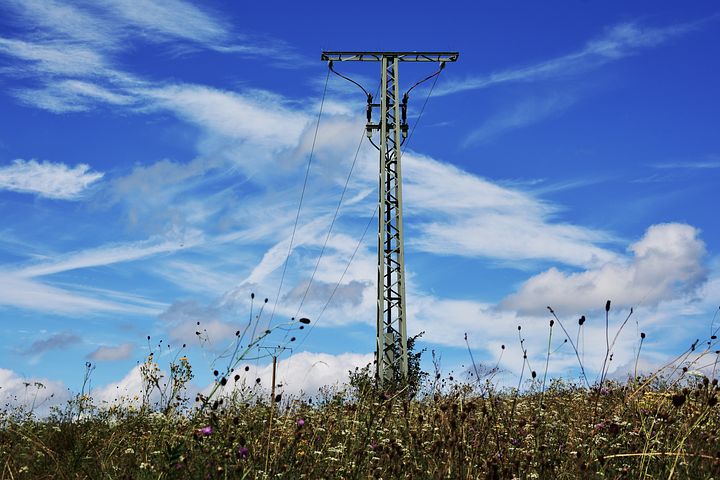The Captive Insurance Opportunity: Renewable Energy
Most corporate buyers of insurance have heard the terms "Captive Insurance", or "Captive Insurance Program". However, many business owners may have differing levels of understanding of this concept.
The goal of this article is to offer clarity on the subject of captive insurance programs, and to provide basic knowledge on just how a captive program could benefit business performance and profitability.
 What is a "Captive"?
What is a "Captive"?
A "captive" is an insurance company created and wholly owned by one or more non-insurance companies, to insure the risks of its owners. For example, a group of businesses, individuals, a franchisor, or their association, could form a captive. Captives are a form of self-insurance, with full reinsurance protection, where the insurer is owned wholly by the insureds. They are typically established to meet the risk management and insurance needs of its owners or members.
One of the main reasons businesses form a captive program is to earn underwriting profits and investment income based on the performance of their individual company. Because members have the potential to earn underwriting profits and investment income, participation in a captive insurance program is viewed as a way to transform the insurance expense line of a P&L into a profit source.
How does a captive work to save a business money?
For every dollar of insurance premium paid to an insurance carrier, roughly 60 cents is set aside to pay for claims, and the carrier's underwriting profit. For a business, that dollar is paid out and gone. Even if a company practices good risk management, and works hard to keep claims low, the carrier will keep the profit that results from their diligence.
In a captive program, that same premium dollar can deliver very different results. Because a company owns their insurance program, when claims are lower (due, in great part, to the effort put forth creating a culture of safety in the organization), a portion of that dollar comes back to the bottom line in the form of profit. The business, not the carrier, benefits.
Captives are the fastest growing segment of the commercial insurance marketplace
Today there are over 7,000 captives operating in the world, with more than $10 billion in annual premiums, and over 2,000 captives domiciled in more than 30 U.S. states. The tremendous growth in captives domiciled both in the U.S. and worldwide, can be seen in both large organizations (over 90 percent of Fortune 500 companies own captives), and mid-sized companies (Group Captives, which insure mid-sized companies, are the fastest growing segment of the captive marketplace).
Why a captive program is right for the Renewable Energy industry 
Renewable energy has had tremendous growth in the US in the past several years. The leaders in this space are seeing their Workers' Compensation and GL premiums rise, while their historical loss ratios have been extremely low. These accounts are often "assigned by analogy", because it is a relatively new industry, and there is not enough rate-making data to support their own classification and rate structure.
Because of the low loss ratios and misclassification issues, most carriers cannot price these accounts appropriately with their current filed rate plans. A group captive option is one of the few ways in which these accounts can take advantage of their strong risk management practices, and ultimately pay fair and equitable premium for their exposure.
Benefits to Renewable Energy business owners
For qualified businesses, a captive program would provide the following benefits:
- Underwriting profits (up to 60% of paid premium) that directly enhance a company's P&L
- More control over underwriting decisions
- A market-competitive insurance rate
- Safety and Claims Management services that reduce claims frequency, and drive costs to the lowest possible level
- Comprehensive coverage designed to meet the insurance requirements of contracts (for Workers' Compensation, General Liability, and Auto Coverage)
- Full insurance and reinsurance protection from an "A+ XV" Rated insurance carrier
- Greater control over, and involvement in, how claims are managed
- The lowest net cost for insurance, which provides a competitive advantage in the business marketplace
For many companies, a captive insurance program can offer a much greater degree of control over insurance costs, and provide a real profit opportunity. Once you have a basic understanding of how a captive works, it's easy to see how it could be a good fit for your insurance and business needs.
Monica Everett is Vice President of Sales for York Alternative Risk Solutions, responsible for the design and implementation of captive insurance structures and solutions. With over thirty years' experience in Property & Casualty and Alternative Risk Insurance, Monica is well versed in both Group Captive and Single Parent Captive Insurance Programs, with a focus on the long-term reduction of risk and expense for clients. She was the lead broker and top producer for a very successful Group Captive Insurance Program for ten years and has established many Captives and Alternative Risk Programs throughout her career.
York Alternative Risk Solutions | www.yorkrsg.com/specialized-markets/alternative-risk-solutions/
Volume: 2018 January/February







